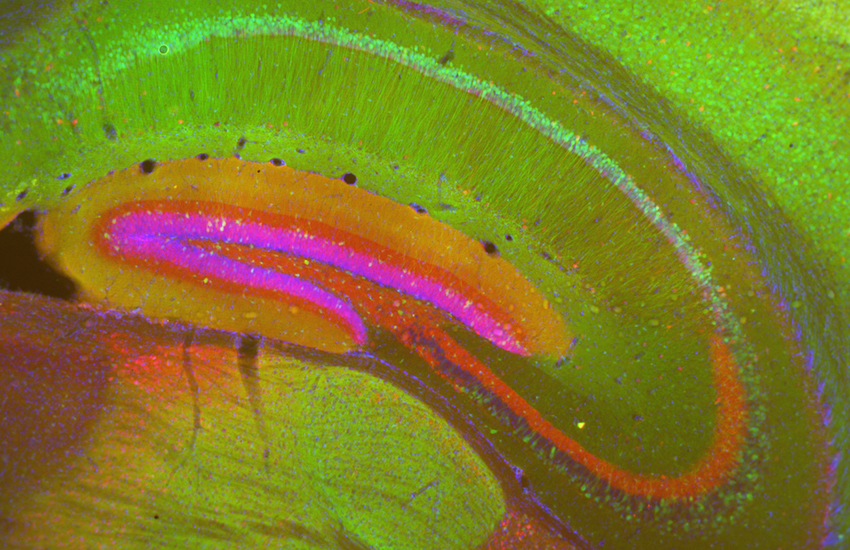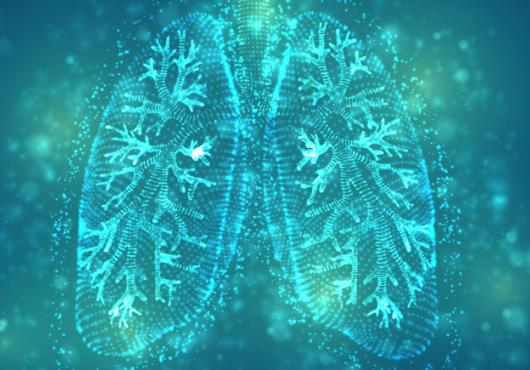
How does the brain snap to attention and orient an organism to the outside world, like when we’re sound asleep and the smoke alarm goes off?
Researchers at Harvard Medical School, Boston Children’s Hospital, and Stanford University offer new insights into how brains that have been zoning out wake up and focus when a situation demands it.
Studying mice, the team found that a little-studied pattern of brain activity called dentate spikes might underlie the transition between inattention and alertness. If the findings hold true in humans, they could broaden understanding of healthy and abnormal cognition and the formation of certain types of memories.
“We have found a brain mechanism for breaking up periods of mind wandering and realigning the ‘cognitive map’ back to reality,” said co-first author Jordan Farrell, member of the faculty of neurology at HMS and an investigator in the F.M. Kirby Neurobiology Center and Rosamund Stone Zander Translational Neuroscience Center at Boston Children’s.
Findings were published in Nature on March 13.
A balance between ripples and spikes
During sleep or daydreaming, our brains replay past events in a form of synchronized activity in the hippocampus called sharp-wave ripples. This helps us consolidate our memories.
Analyzing data from a mouse model, Farrell and colleagues from the laboratory of Ivan Soltesz at Stanford University began exploring another, little-known neuronal activity pattern: synchronized spikes of firing in the dentate gyrus, part of the hippocampus.
These dentate spikes, they found, seem to occur when an “offline” brain is aroused. The team believes that these patterns may help mice, and possibly humans, quickly process new information and orient themselves to what’s happening in the environment — like when a teacher suddenly calls on a student who is daydreaming in class.
The data suggested that dentate spikes promote associative memory, in which a sensory stimulus — say, a series of piercing beeps — is stored as a memory so that we come to associate the noise with a smoke alarm going off and the possible need to evacuate.
Sharp-wave ripples and dentate spikes may have complementary roles, Farrell said.
“The brain is toggling through these two states,” he said.
Possible clues for neurologic disorders
This new knowledge about dentate spikes could open windows into some neuropsychiatric disorders. Perhaps dentate spikes affect attention and arousal in people with attention-deficit/hyperactivity disorder or post-traumatic stress, Farrell suggested, or perhaps they’re altered in Alzheimer’s disease, disrupting formation of new memories.
Farrell is most interested in epilepsy, which is marked by synchronized spikes of excessive neuron-firing. He plans to investigate the role of dentate spikes by better understanding their basic mechanisms and then manipulating the neural networks that control dentate spikes in the brains of epileptic mice. He hopes to eventually extend the study to children with epilepsy.
“In people with epilepsy, the synchronous activity during dentate spikes could tip the brain into a pathological state,” Farrell speculated. “The dentate spikes [could] add an extra push to the system.”
Authorship, funding, disclosures
Farrell is co-first author with Ernie Hwaun. Barna Dudok is also an author.
The study was funded by the U.S. National Institutes of Health (grants R01NS121106, U19NS104590, K99NS126725, and K99NS117795) as well as a Canadian Institutes for Health Research postdoctoral fellowship and a Wu Tsai Neurosciences Institute Interdisciplinary Scholars Award.





